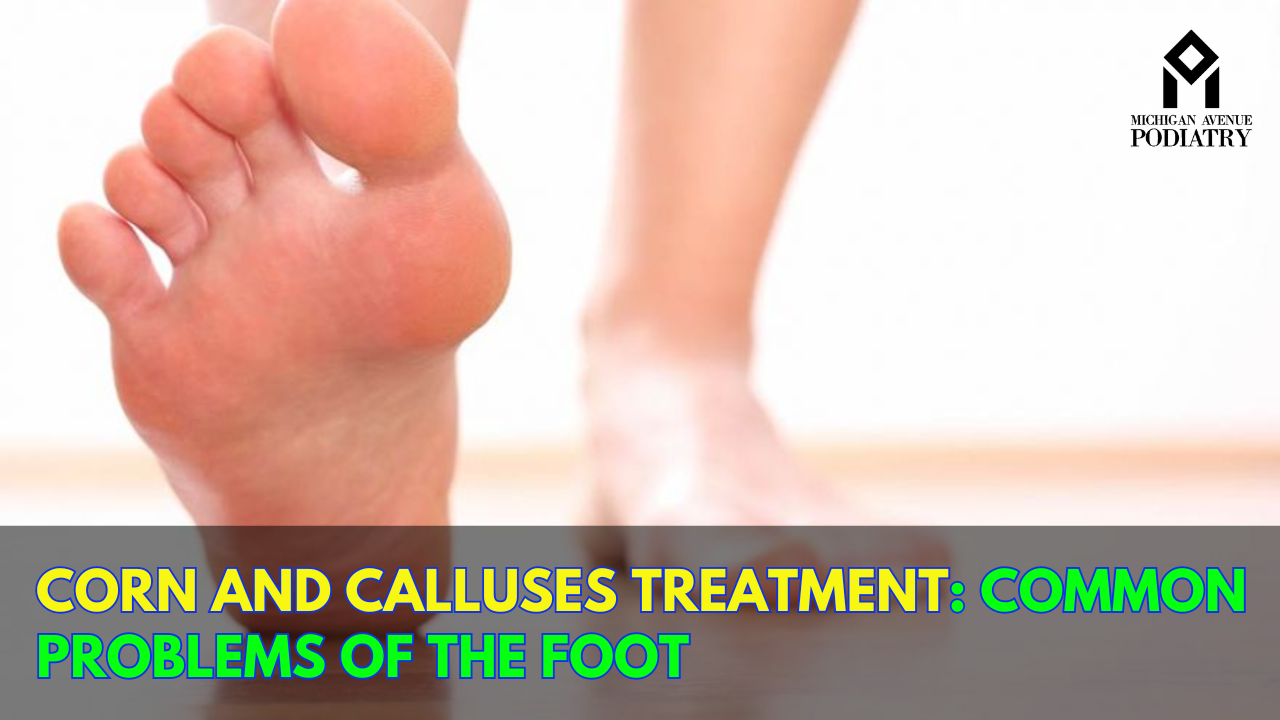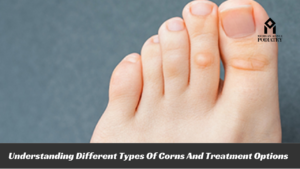Corns and calluses are common foot conditions that can cause discomfort and pain if left untreated. While they may seem minor, these thickened areas of skin can significantly impact mobility and quality of life. In this article, we’ll delve into the causes of corns and calluses, effective treatment options, and the important role podiatrists play in managing these foot problems to ensure optimal foot health and comfort.
What are Corns and Calluses?
Corns and calluses are areas of thickened, hardened skin that develop in response to repeated friction or pressure. While they share similarities, there are key differences between the two:
- Corns: Corns are small, round areas of thickened skin that typically develop on the toes or sides of the feet. They may be hard or soft and can be painful when pressed.
- Calluses: Calluses are larger, flat areas of thickened skin that usually form on the soles of the feet or other weight-bearing areas. Unlike corns, calluses are usually painless but may cause discomfort due to their size and thickness.
Causes of Corns and Calluses:
- Ill-fitting footwear: Tight shoes or high heels can create pressure points on the feet, leading to the formation of corns and calluses.
- Foot abnormalities: Bunions, hammertoes, or other foot deformities can increase the risk of developing corns and calluses.
- High-impact activities: Activities that involve repetitive friction or pressure on the feet, such as running or dancing, can contribute to corns and calluses.
- Poor foot hygiene: Neglecting to moisturize or exfoliate the feet regularly can lead to the accumulation of dead skin cells, increasing the risk of corns and calluses.
Options for Corn and Calluses Treatment:
- Proper footwear: Wearing shoes that fit well and provide adequate cushioning and support can help prevent and alleviate corns and calluses.
- Padding: Using protective pads or cushioning inserts can reduce friction and pressure on corns and calluses, relieving discomfort.
- Salicylic acid: Over-the-counter corn and callus removers containing salicylic acid can help soften and remove thickened skin. It’s essential to follow the manufacturer’s instructions carefully to avoid irritation.
- Pumice stone: Gently rubbing a pumice stone on dampened skin can help smooth rough areas and reduce the size of corns and calluses.
- Moisturizers: Regularly moisturizing the feet with a hydrating cream or lotion can help soften skin and prevent the buildup of dead skin cells.
- Professional treatment: In severe cases or if home remedies are ineffective, a podiatrist can provide professional treatment, such as debridement (removal of dead skin), corticosteroid injections, or custom orthotic devices to relieve pressure on affected areas.
The Role of a Podiatrist in Treating Corns and Calluses
Podiatrists are foot and ankle specialists trained to diagnose and treat a wide range of foot conditions, including corns and calluses. Their role in managing these foot problems includes:
- Accurate diagnosis: Podiatrists can differentiate between corns and calluses and identify any underlying foot abnormalities contributing to their development.
- Customized treatment plans: Based on the severity of corns and calluses and individual patient needs, podiatrists develop personalized treatment plans to address symptoms and prevent recurrence.
- Professional interventions: Podiatrists can perform professional treatments such as debridement, corn removal, or corticosteroid injections to provide relief and promote healing.
- Preventive care: Podiatrists offer guidance on proper foot care practices, footwear selection, and preventive measures to reduce the risk of future corns and calluses.
Conclusion: Corns and calluses are common foot problems that can cause discomfort and affect mobility if left untreated. By understanding the causes, symptoms, and treatment options for corns and calluses, individuals can take proactive steps to address these issues and maintain optimal foot health. Seeking professional care from a podiatrist is essential for accurate diagnosis, personalized treatment, and long-term management of corns and calluses. Remember, prioritizing foot health and seeking timely intervention can help prevent complications and ensure comfort and mobility for years to come.


